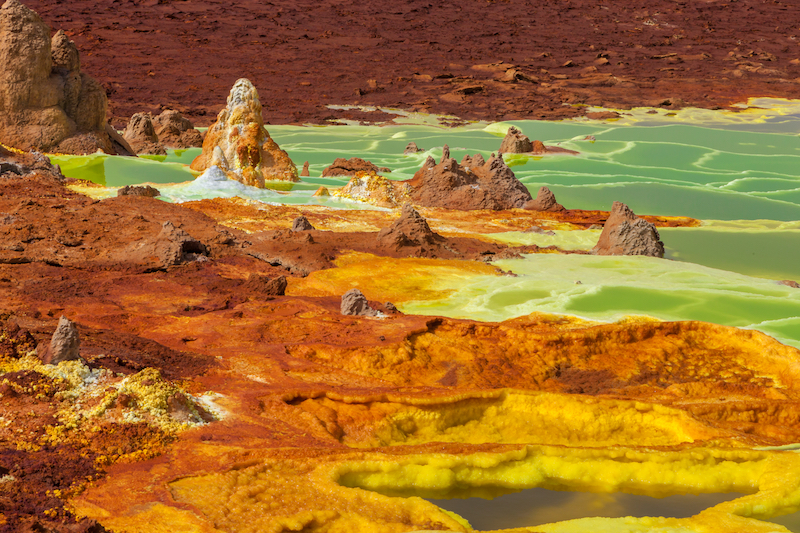“ … the most inhospitable, inhabited place on the planet”
September marks the transition of the cloudy, rainy Kremt to the golden, warm and sunny skies of Bega in Ethiopia.
But there is a place here that begs to differ: in the heart of the Afar Triangle lies a place known as the Danakil Depression, an alien landscape which looks, smells and feels like another planet. There, September marks the end of the warmest season of the year that begins in May. Dubbed the “most inhospitable, inhabited place on the planet”, the Danakil’s scorching temperatures reach their peak starting from May and gradually drop to their modest, sub 40° Celsius temperatures in September.
I travelled back to this land of myriad facets after four years, long after the effects of COVID-19 halted tourism and the instability in the northern part of our country that spread to the region left a painful wound.
But the Danakil seems to have held its ground and still awaits visitors with its usual awe-inspiring beauty. The smoking mountain, also dubbed “the gateway to hell”, the powerful Erta Ale volcano has persisted with its over 130 year old legacy as one of the few active lava lakes in the world, roaring as it melts the rocks around it into a stream of fire: Dallol, the alien landscape, the breathtaking field of sulfur and nitrogen, is still decorated with its colorful formations that almost make you feel like it is another planet than earth, and the beautiful saline lakes Asale and Afdera have continued to provide the mineral that we all have on our tables, the “white gold” of the Afar, salt.
Most of all, the people of Afar, that made this land of scorching heat and unforgiving landscape their home, have their hearts wide open to show the secrets that gave them the strength to live in this place, way below sea level, and to give you a taste of what it is like to be an AFAR: strong, patriotic and beautiful.
As the saying goes, “The world is a book and those who do not travel read only one page”. I say travel to Afar this year and read one of the most unique stories of our planet.
by Michael Metaferia
instagram.com/michael.metaferia

